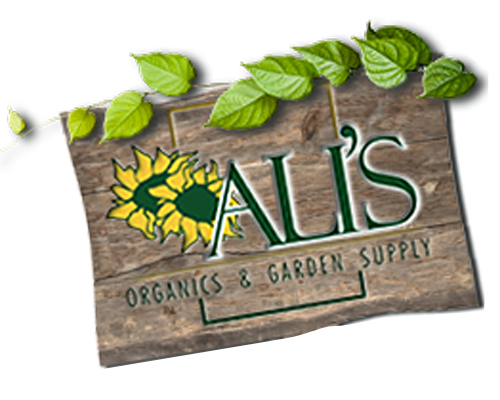Indoor Seed Starting Tips
Posted January 16, 2014

Startin g seeds from organic seeds is rewarding and economical. The seeds of most crop types can be planed directly into garden soil, but some will benefit from being started indoors and then transplanted out as seedlings. Here are some general guidelines to help you get off to a great success when planting seeds!
g seeds from organic seeds is rewarding and economical. The seeds of most crop types can be planed directly into garden soil, but some will benefit from being started indoors and then transplanted out as seedlings. Here are some general guidelines to help you get off to a great success when planting seeds!
Indoor Seed Starting. It's important to know the last spring frost date in your area. You can find this out by doing a search on the internet or contact your local Extension Office. Count back from that date the number of weeks indicated below to determine the appropriate starting date for different crops. An asterisk (*) designates a frost-tolerant plant that can be set out 4 weeks before that last frost date.
10-12 weeks: onions, *leeks and *chives
8-10 weeks: peppers, lettuce, *broccoli, *cabbage
6-8 weeks: eggplants and tomatoes
3-4 weeks: cucumbers, melons, pumpkins, squash
Soil and Containers. First, prepare your potting soil. If it's dry, mix with water until moist by not soggy in a bucket. Choose fiber pots, coconut coir or plastic trays, or use small yogurt cups (be sure to poke a few holes in the bottom for drainage) and fill them with potting soil, gently packing it in lightly. The soil should sit just below the rim of the container or cell.
Planting Techniques. Get familiar with the cultural information on the seed packet of each variety and crop type. Plant a few seeds per container or cell After seeding, water lightly. The use of a soft watering can, or a misting device works well. It is important to not let the soil dry out during germination, but equally important not to over water. After your seedlings emerge, you can thin to one seedling per cell by pinching off the unwanted plants at the base of the stem.
Heat and Light Requirements. Air temperatures should be 65-75 degree Fahrenheit. Full Spectrum Fluorescent lights are valuable because they provide a full light spectrum, and they don't produce much heat, and use very little electricity. Some gardeners put their seedlings in a sunny south facing window, but even the sunniest location will likely not provide adequate light. Seedlings that do not receive at least 10 hours of direct light will become "leggy", as they stretch to reach the light, becoming elongated and weak-stemmed. To avoid this, place fluorescent lights about an inch above your containers. As your seedlings grow, raise the lights to keep them just above the tops of your plants. Nanodome Mini Greenhouses are great indoor growing systems. The dome keeps moisture in and there is a light provided with the system to keep your plants happy!



Comments (0 Comments)
There are no comments.
Post Comment